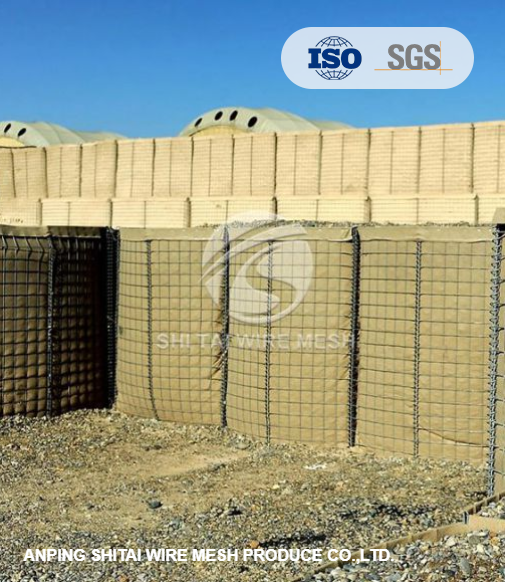Defensive Barriers-Solution to Military and Flood Control
Apr. 18, 2024
Defensive barriers, also known as protective barriers or flood barriers, play a crucial role in providing security, protection, and flood control in various scenarios. From military operations and border security to flood prevention and disaster management, these versatile barriers offer a range of benefits and applications.
Understanding Defensive Barriers:
Defensive barriers are structures designed to provide protection against threats such as enemy attacks, ballistic projectiles, vehicle impact, and floodwaters.
These barriers are typically made from durable materials such as steel, concrete, or synthetic fabrics and are engineered to withstand significant force and pressure.
Defensive barriers come in various forms, including blast walls, gabion barriers, HESCO barriers, flood barriers, and temporary barriers such as sandbags or flood bags.
Military Defense Applications:
Blast Protection: Defensive barriers are extensively used in military operations to provide blast protection for personnel, vehicles, and infrastructure against explosive devices, mortar rounds, and artillery shells.
Perimeter Security: Along borders, military bases, and sensitive installations, defensive barriers create a fortified perimeter to prevent unauthorized entry and secure strategic assets.
Force Protection: Troops deployed in combat zones utilize defensive barriers to establish defensive positions, bunkers, checkpoints, and observation posts, enhancing their safety and survivability.
Flood Control and Disaster Management:
Flood Prevention: In flood-prone areas, defensive barriers such as flood walls, levees, and sandbag barriers are deployed to contain rising water levels, divert floodwaters, and protect communities, infrastructure, and agricultural land.
Related links:
Noise Barriers: Architectural & Industrial Noise Control
Exploring the Versatility and Benefits of Custom Gabion Solutions
Exploring the Advantages and Applications of 3D FencesEmergency Response: During natural disasters such as hurricanes, storms, and tsunamis, defensive barriers are deployed as part of emergency response efforts to mitigate damage, control flooding, and provide temporary protection for affected areas.
Rapid Deployment: Modular and portable defensive barriers allow for quick deployment and assembly, enabling rapid response to evolving flood situations and emergency scenarios.
Advantages of Defensive Barriers:
Versatility: Defensive barriers can be tailored to suit specific requirements, including size, shape, material, and deployment method, making them adaptable to diverse environments and applications.
Scalability: From small-scale installations to large-scale defense perimeters or flood protection systems, defensive barriers can be scaled up or down to meet varying security and flood control needs.
Cost-Effectiveness: Compared to permanent infrastructure or conventional flood control measures, defensive barriers offer a cost-effective solution that requires minimal construction time and resources.
Reusability: Many types of defensive barriers are reusable and can be disassembled, relocated, and repurposed for multiple deployments or disaster scenarios, maximizing their utility and value.
Defensive barriers serve as essential tools for military defense and flood control, providing protection, security, and resilience in challenging environments. Whether deployed in combat zones, border regions, or flood-prone areas, these versatile barriers offer a range of benefits, including blast protection, perimeter security, flood prevention, and emergency response capabilities. As threats evolve and natural disasters become more frequent, the importance of defensive barriers in safeguarding lives, property, and critical infrastructure continues to grow, highlighting their indispensable role in modern defense and disaster management strategies.
156
0
0


Comments
All Comments (0)